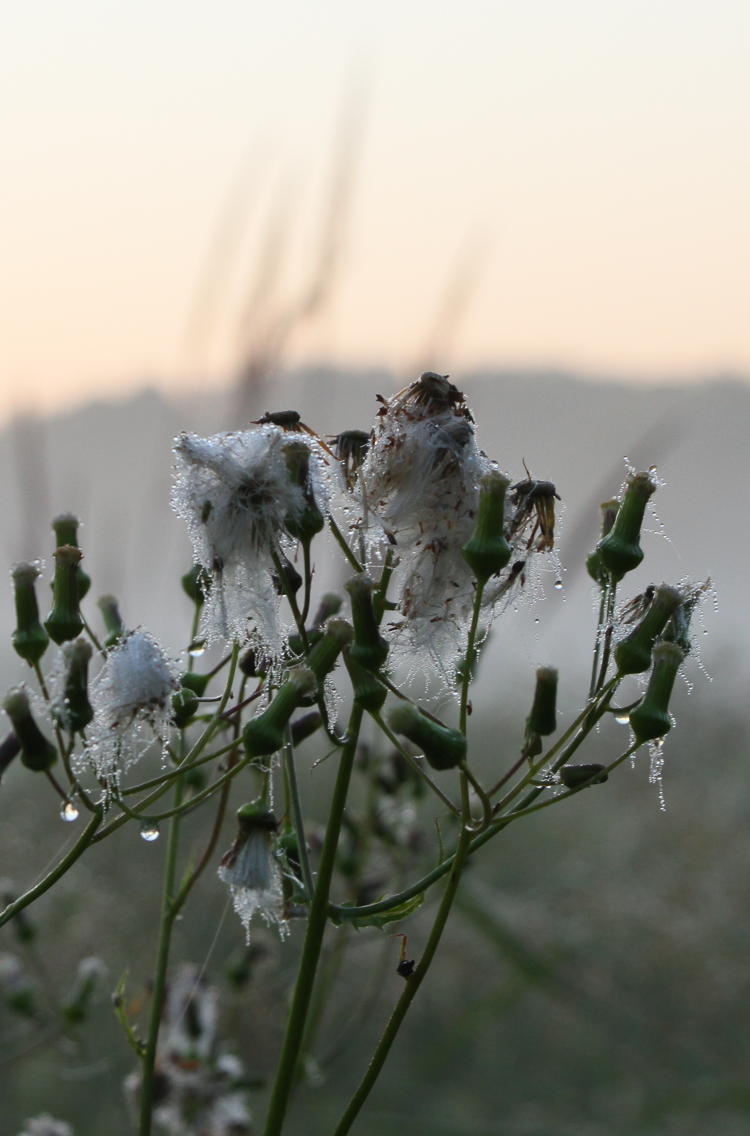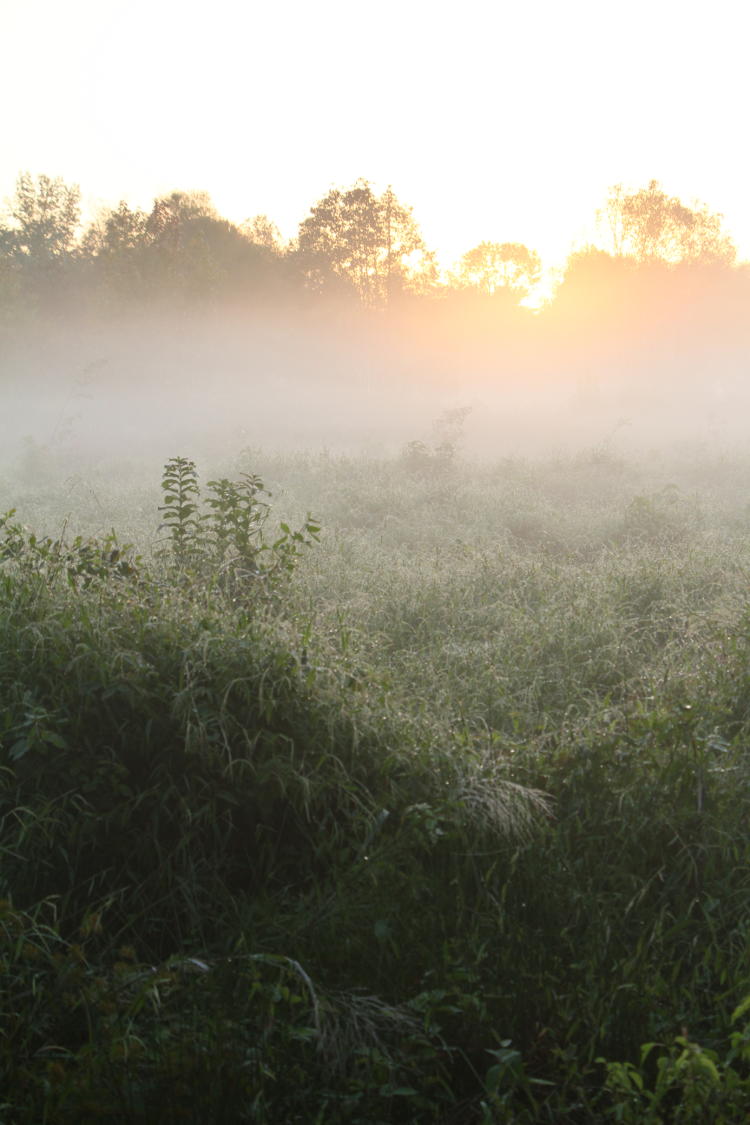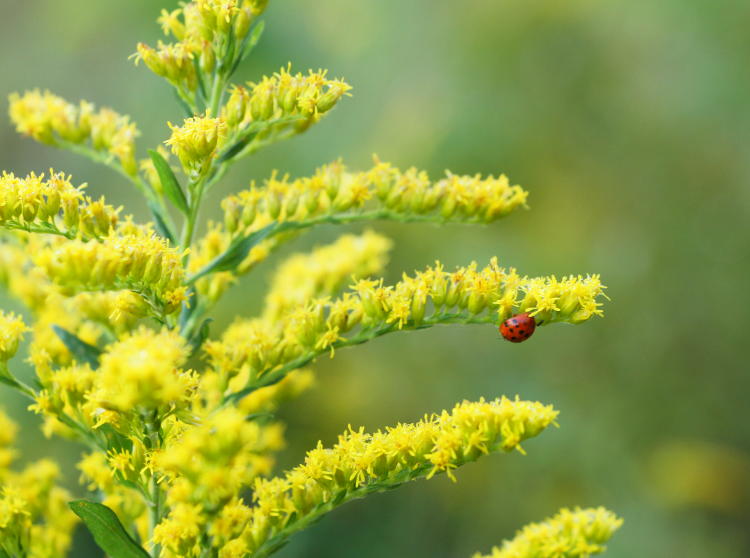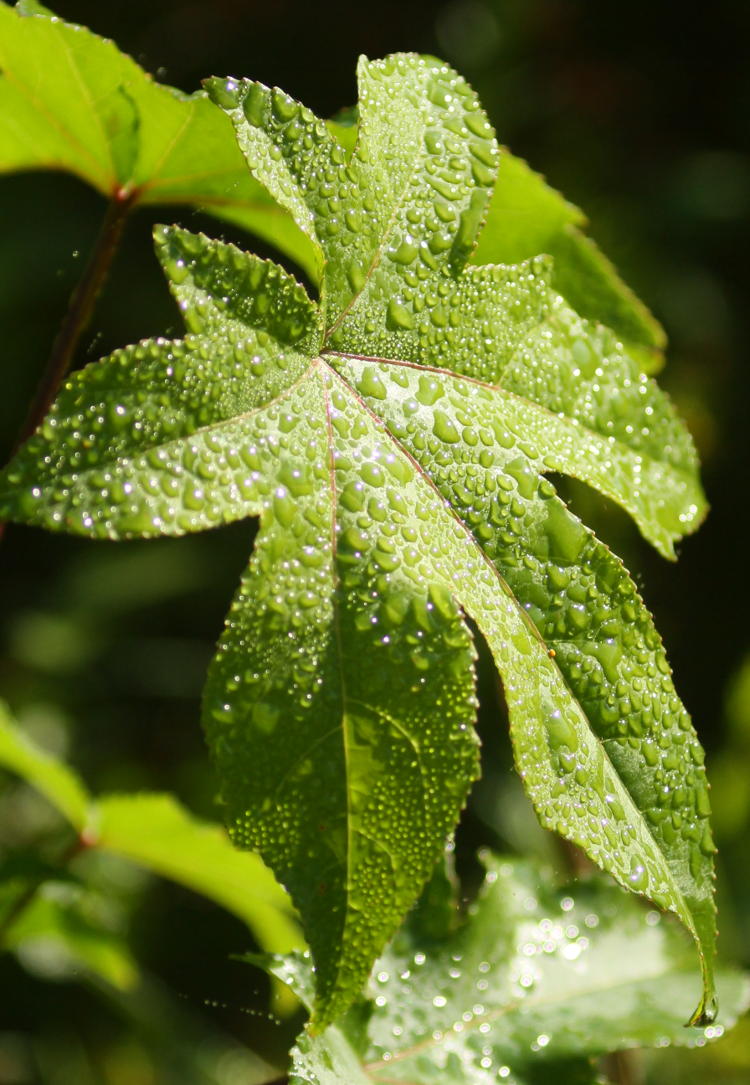I got enough photos from a recent outing to Mason Farm Biological Reserve to separate them into two broader categories, so we start off with the fartsy ones, since I don’t do art.
Actually, we’ll start off starting off with a setting one.

We couldn’t quite call this ‘fog,’ (or at least, I couldn’t, but Buggato had no problem with it) – it was more of a low-lying morning mist, which Mason Farm is prone to when the temperature is right. They say a cloud can weigh a few hundred tons, and it’s easy to believe when you see conditions like this with the dew all over everything: a two minute walk through that undergrowth would soak you to the skin from the waist down.
This meant lots of dew to play with, but also low light, at least until the sun rose high enough, and then the dew would burn off in a matter of minutes. So there were some narrow windows and specific conditions to work within, but we did okay.

I spent, really, a ridiculous amount of time trying to determine what these were, with no definitive answer. The closest that I got was finding a perfect match in a photo, to find that it was illustrating something entirely unrelated, because far be it from a news station to complete their trivial post with finding a photo of the actual subject that they’re talking about. Chuckleheads.
As the sun broke through, we got some color to play with.

This came out better than expected; the sun was just barely breaking through a gap in the trees, and its light only impinged on the mist in a small area, giving this very cool local glow. One of these days I’ll set up the camera on time-lapse and get a video of the light curtain from the rising (or setting) sun traveling across the landscape. Especially if I can find nice foreground elements that cast shadows that can be tracked.
And then, we have this ray effect, which may or may not appear ominous, depending on the movies you tend to watch.

I got lucky with the mist hanging within the trees, which doesn’t often happen – it tends to be more open-field oriented, and caught this composition in the two minutes or so that it existed. A little shifting allowed the sun to just barely peek past the tree and put a starburst there, instead of either being entirely blocked, or coming full strength into the camera, affecting exposure and causing flare and ghosts – more thought goes into these than you might expect. Sometimes, anyway. By the way, white balance was set for full sunlight (essentially no correction,) which retains these nice orange colors that are so expressive.
It also retains the blue tones in the shadows, which may or may not work, depending on what you’re after.

I believe this is an evening primrose (Oenothera biennis) – the one in the front, anyway, while the background is goldenrod (one of over a hundred species in the genus Solidago.) It wasn’t intentional that the supporting stem for the primrose vanished from focus, making it look like another bloom on the goldenrod spray, but I’ll take credit for that compositional element anyway.
Because of the tree lines in the reserve, large portions of tour remained in shadow for a long time even after the sun was well up, and likely would have until late morning, so some of the opportunities had a muted look.

This one had a slight tweak to the curves to counteract this a little, but it would have been unrealistic if I’d taken it much further. The blue/whatever spikes are dense blazing star (Liatris spicata,) and in fact, I’m encouraging people to write in and tell me what color they actually are. The wildflower database had them in the red section and not the blue, but they also don’t have a purple section, so…
As the light improved, the subjects started to take on different hues.

Since I couldn’t get too close to this honeysuckle blossom (Caprifoliaceae family,) this is a tight crop of a larger frame, but it shows the dew detail better. The sun is almost making an appearance here. It gets more noticeable with the next.

The goldenrod was, really, all over the damn place, for the most part forming a yellow accent to much of the landscape, but at times it hosted various critters of interest, which you will see more of in part 2. I couldn’t pass on the red lady beetle throwing some contrast in.

I still have yet to identify the type of spider that makes such webs, which is surprising since I see them all over at this time of year, revealed by the humidity that adheres to them. To the best of my knowledge this is a variety of sheetweb spider, family Linyphiidae, but that’s all I have right now, especially since getting even a glimpse of the occupant is difficult, much less detailed photos. In this case I simply did the short depth-of-field thing with the backlighting to go all abstracty.
And as the light got even stronger, more depth was available.

Just liked the light on this one.
Had to cheat on this next image, though – wanted detail that was in too deep shadow.

Given the opportunity for a rare perspective by some mushrooms sprouting from a treetrunk overhead, I used the flash to illuminate them sharply – the flash will show up more often in part 2 as I went for details over fart. Most times to get this view you have to be crawling around on the ground, but here I didn’t even have to crouch. And the timing was pretty good, since mushrooms have a very short ‘healthy’ period before either being eaten or rotting on their own, or both, so hooray us.
And finally, a harbinger of things to come – this was still more fartsy than illustrative, but serves as the lead-in to part 2, whenever I post it. I’m not trying to identify this spider, I just liked the curve of the web and tried for a new approach, given the opportunity. I took several frames, trying to nail focus at f4 (with the Mamiya 80mm macro, doncha know,) and only one came out sharp enough. But that’s why you take a lot when the depth is so short.

More on the way…



















































